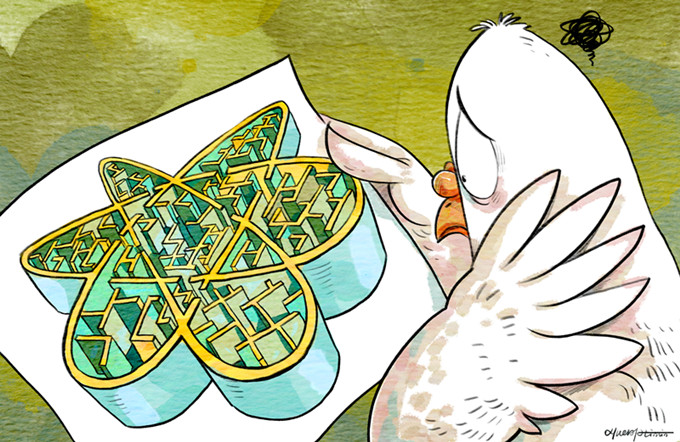Much ado about a fragrant flower
 |
|
Visitors view the cherry blossoms at night in Tongji University in Shanghai on April 4, 2017.[Photo/Xinhua] |
Symbol of the Bushido spirit
Cherry blossom (sakura in Japanese) has a close connection with Japanese militarism. Two kinds of flowers can be called Japan's "national flowers": chrysanthemum, which usually symbolizes the elite status of the Japanese imperial household, and cherry blossom, which the Japanese people admire and are proud of.
Sakura's flowering season is very short; as soon as it reaches the most glorious period of its life, it starts to wither away. This is in accordance with an important traditional Japanese aesthetics or doctrine called "substance sadness"-being overcome by a sense of sadness over the short span of human life.
This doctrine, or ideology, is a highly valuable part of Bushido, the traditional code of samurai in Japan in the medieval and early modern periods that stresses self-discipline, simple living, loyalty to the emperor, and values honor over life. The samurais were trained to die, just like sakura, even in the most glorious period of their life.
In the last few years of Tokugawa Shogunate (the last feudal Japanese military government between 1603 and 1868), the authorities launched a propaganda campaign to shape citizens' consciousness amid growing domestic strife and foreign aggression. The authorities promoted sakura as a representative of Yamato-damashii (spiritual and cultural values and characteristics of the Japanese people) to propagate nationalism. They painted a picture of the Japanese people as "brave and daring with an indomitable spirit" to further the cause of Japanese military doctrines.
During World War II, many secret service teams sent by Japan to attack Pearl Harbor were named after sakura. It was only after the war and subsequent US occupation that sakura gradually lost its political and nationalist symbolism in Japan.
Tang Yongliang, deputy director of the Institute of Japanese Studies, Chinese Academy of Social Sciences
Narrow-minded patriotism bad
The origin of cherry blossom, many biologists have said, is the northern side of the Himalayas in China. Japanese people carried the seeds of the cherry blossom tree from China during the Tang Dynasty (AD 618-907) and then carefully nurtured it to such an extent that it became the national flower of Japan.
Therefore, sakura has a long history in Japanese culture and is valued by the Japanese people, while militarism has a relatively short history. It was the imperial Japanese government that tried to establish a connection between sakura and militarism, which had limited influence on the Japanese people. In today's Japan, however, most of the people are well-educated and have the ability to differentiate good from bad, and thus reject the connection.
According to Jack Goody's The Culture of Flowers, flowers are usually conceptualized in different ways as times and situations change. In contemporary society, the people's admiration for sakura would never be inspired by the militarism. Narrow-minded patriots connect sakura and militarism and to some degree help militarists to promote this association. And narrow-minded patriotism usually leads to crude judgments. It also creates inexact logical connections between concepts without the backing of solid facts, which in any circumstances should be avoided.
There is nothing wrong with people admiring cherry blossom. As for us anthropologists, cultural globalization is even more important than economic integration.
Cultural communication naturally transcends borders of nations. The lesson we can learn from this is that interactions between peoples of different countries can help them better understand and admire each others' cultures. They can also help strengthen their inherent cultural consciousness. The development of human being based on cultural confidence, respect, inclusiveness and diversity is more important.
Actually, culture can be turned into "hard power" and help China to play a bigger role in maintaining global peace and building a community of shared destiny.
Zhang Xiaojun, a professor in the Department of Sociology, Tsinghua University





















